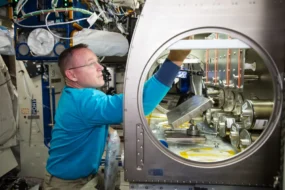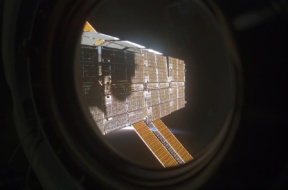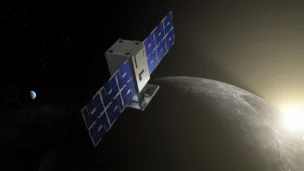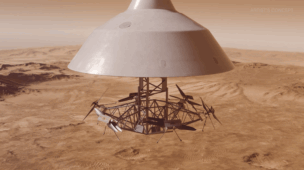Small rocks, big rocks, carbon rocks, water rocks—everyone gets a space rock.
Yesterday, NASA revealed the samples it collected from the 4.5B-year-old asteroid, Bennu, determining the rocks contained a high concentration of carbon and water.
Rocks on rocks: Upon opening the capsule of the OSIRIS-REx spacecraft last month, NASA discovered an “abundance” of asteroid bits overflowing from the main collection unit.
NASA has been diligently collecting the bonus samples before opening the TAGSAM primary storage unit. Thus far, they have collected and weighed 1.5 grams of rocks, a fraction of the 250 grams that NASA estimates they will find in the TAGSAM. The samples will be divvied up and studied by scientists in the coming years.
“We’re going to learn so much about the origin of the solar system, evolution, and potentially how life started here on Earth,” Daniel Glavin, a program sample analyst, said on a press call.
Since NASA knows us space nerds are far too impatient to wait years, the agency has already placed a couple of space rocks under microscopes and X-rays for preliminary analysis.
Initial findings: NASA discovered that the samples contain both carbon and water—two key building blocks of life. The samples contain:
- 5% carbon by weight.
- Water—locked in crystal structures contained in clay minerals
- Sulfide mineral—a critical element to planetary evolution and amino acids
- Iron oxide—Important for organic evolution
“The OSIRIS-REx sample is the biggest carbon-rich asteroid sample ever delivered to Earth and will help scientists investigate the origins of life on our own planet for generations to come,” said NASA chief Bill Nelson.
On to Psyche: Having secured samples from Bennu, NASA is turning its focus to Psyche. On Friday, the agency is set to launch a surveyor spacecraft aboard Falcon Heavy on a six-year journey to the Psyche asteroid.
Psyche is a metal-rich world and one of the largest asteroids in our solar system. The van-sized surveyor spacecraft will orbit the asteroid for two years, gathering data and charting its surface. Through the study of Psyche, NASA aims to uncover insights into the formation of planets with metal-rich cores, such as Earth.




